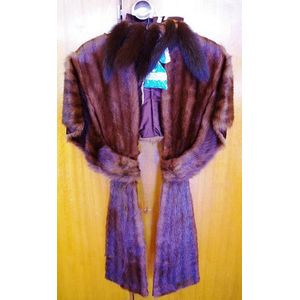Carved Chinese Ruyi Set
You must be a subscriber, and be logged in to view price and dealer details.
Subscribe Now to view actual auction price for this item
When you subscribe, you have the option of setting the currency in which to display prices to $Au, $US, $NZ or Stg.
- Rosewood - A dense timber that varies in shade to very light brown to almost black. When rosewood is cut and sanded the colour of the timber will turn black, and after polishing and exposure to daylight, the surface will gradually lighten over time to light brown with black streaks.
The name comes from the odour emanating from the timber when it is planed, sanded or cut.
Rosewood was very popular for use in Victorian furniture in the second half of the 19th century, and at that time most of the rosewood was imported from Brazil. However it also grows in India and Indonesia.
It is used in the sold for chairs and table legs, but for carcase furniture such as side cabinets and bookcases, and for table tops it is always used as a veneer. - Boxwood - Boxwood is a hard, yellow coloured, close grained timber. In the 19th century it was often used for inlays, especially stringing, because of its contrasting colour to the darker timbers of the carcase. Stringing is the inlay of a narrow strip of veneer of a lighter colour, such as boxwood along or close to the edges of an object that has been veneered in a darker timber such as mahogany.
Because of its fine grain and resistnce to splitting or chipping it has also been used for treen, turnings, carvings and other small wooden items, such as chess pieces. - Kylin or Qilin - A kylin or qilin is a mythical Chinese animal, dating back to the 5th century with the head of a dragon, the body of a deer and the tail of a lion. It is a regarded as a good omen bringing serenity and prosperity, and is said to appear with the coming or departure of a wise sage or illustrious ruler.
It is also part of the culture of Korea and Japan.
As well as being represented in bronze and jade, it is also used as a decorative motif on ceramics.
This item has been included into following indexes:
-
Chinese jade, carved animals and other
- phoenix 55
- various carvings 1,596
Visually similar items

Chinese, 20th century, a painted paper hanging scroll, finely painted in colours with three goldfish and aquatic vegetation with bamboo above, inscribed and sealed, on a silk-lined paper backing. Height 196 cm. Width 42 cm (overall)

Vintage mink stole and tails, chocolate brown in colour

Collection of Royal Doulton saucers and plates

A basse-taille enamel and silver wire cloisonne vase, shouldered shape, decorated with rose blooms on a ruby ground. Height 25 cm
